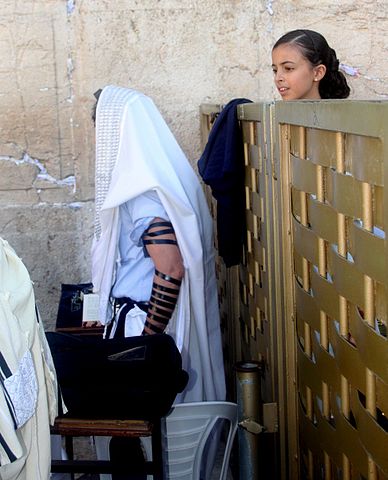
A Hand Through the Mechitza

Wikimedia/Peter van der Sluijs
My family is hitting the b’nai mitzvah circuit hard these days. Our daughter is in seventh grade, and we’ve been spending our Shabbats visiting various local synagogues to celebrate our friends’ simchas.
When we travel to the modern Orthodox synagogue, the men and women are separated by a mechitza, a partition made of wood and plexiglass. I grew up in a synagogue with a mechitza, and I never thought much about this gender segregation until my first semester in college, when Sandra Bartky and Andrea Dworkin opened my eyes to the myriad ways women were marginalized. I rejected the Orthodox rationale that women did not need to perform rituals in the synagogue because we are more spiritually evolved or that our energies are best directed toward keeping the dietary laws, educating the children, and lighting the Sabbath candles.
My feelings about mechitzas lasted until four years ago, when I brought my daughter to a modern Orthodox synagogue for her first time. Our friend, Debbie, and her husband had invited us to their son’s bar mitzvah. Debbie is a dynamo, one hundred layers deep, and sings like a cross between Sheryl Crow and the lead Dixie Chick. In the months leading up to the simcha, she shared her sadness about not being permitted to participate in the service. I felt her hurt.
One comment on “A Hand Through the Mechitza”
Comments are closed.




What a beautiful story. I grew up in a very secular home, though my paternal grandparents were Orthodox. I reflexively resented a mechitza. I married a more observant person, & my husband & I are now Conservative Egalitarian. Our daughter was the first girl to chant Torah in our suburban synagogue, back in 1991, and one old man walked out that first time. Now, she is a grown woman who regularly leyns Torah and Haftarah in her egal Conservative shul in Massachusetts, & we are VERY proud of her!